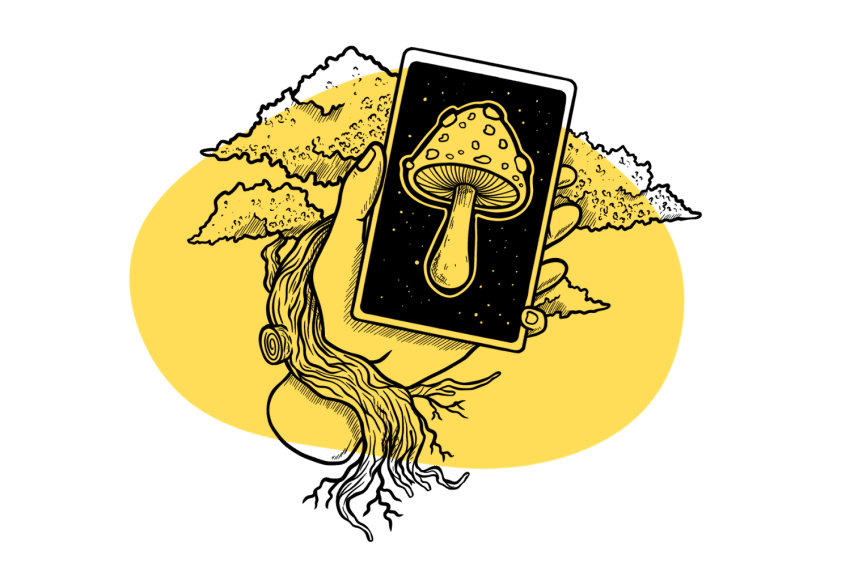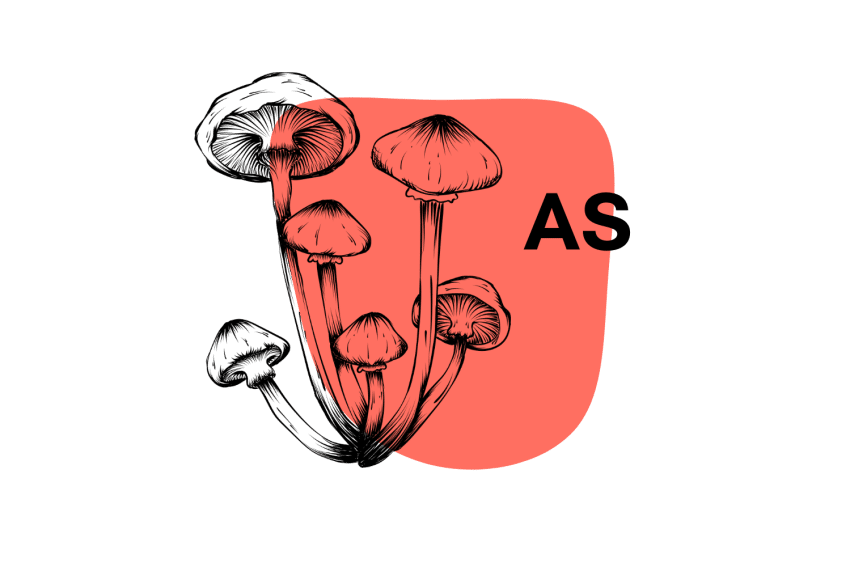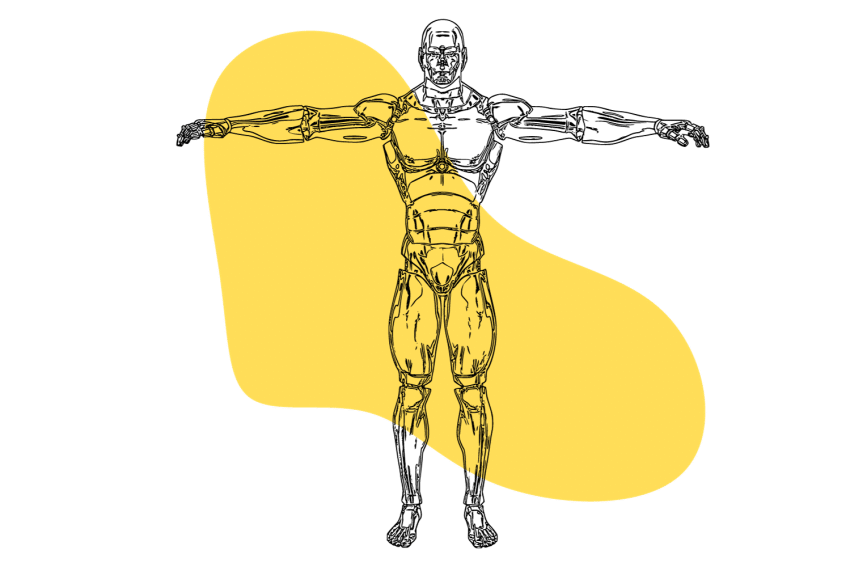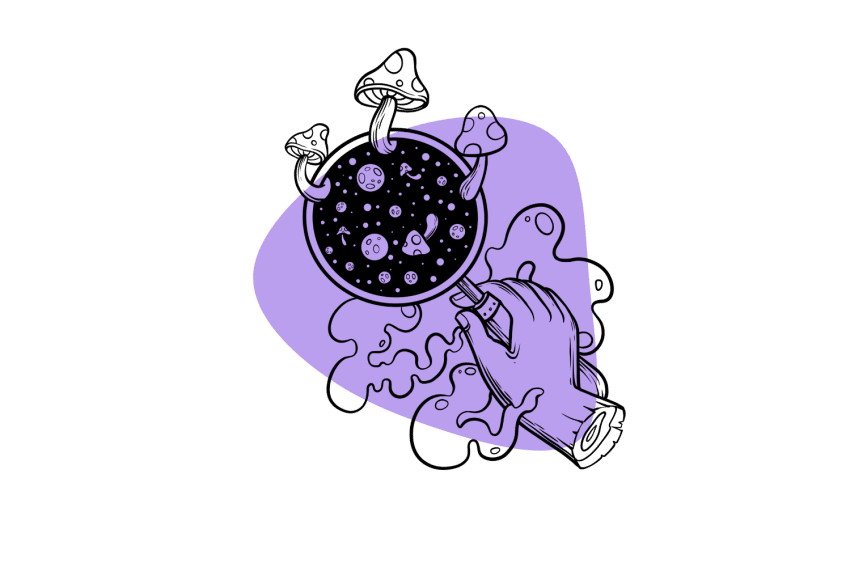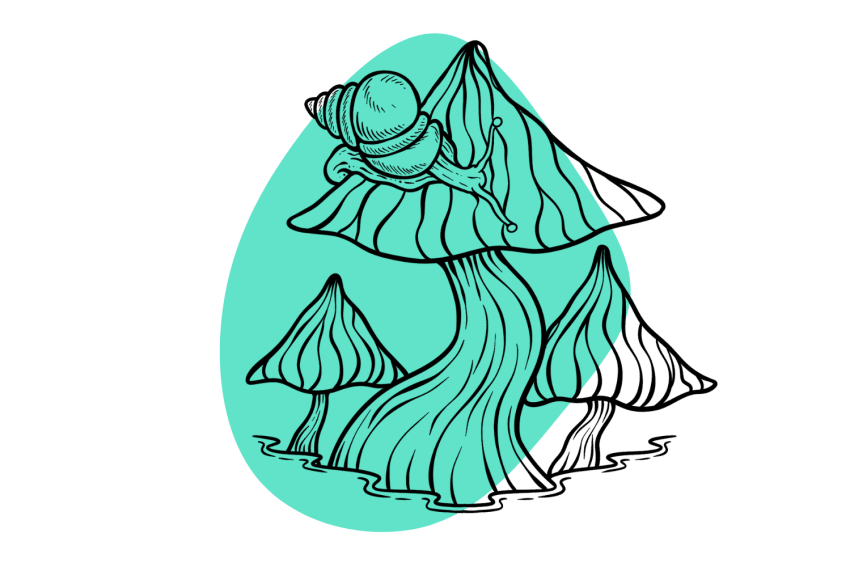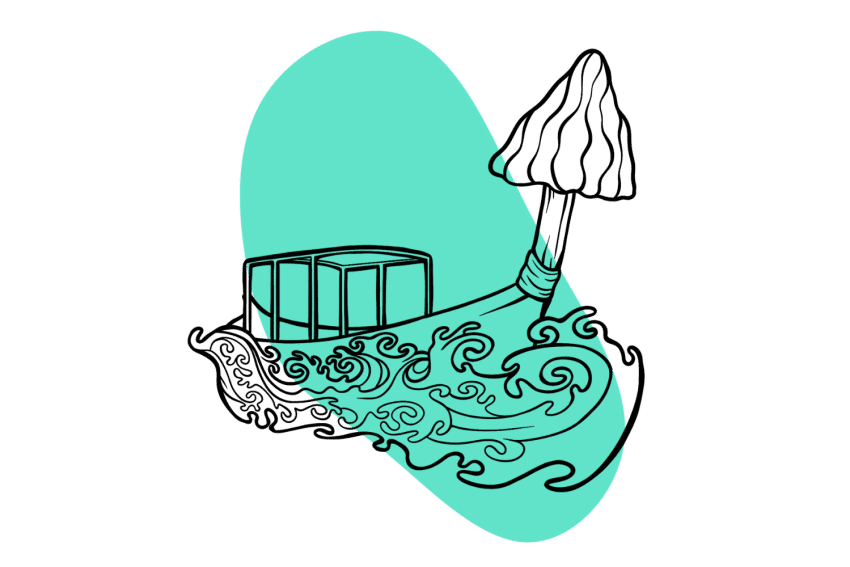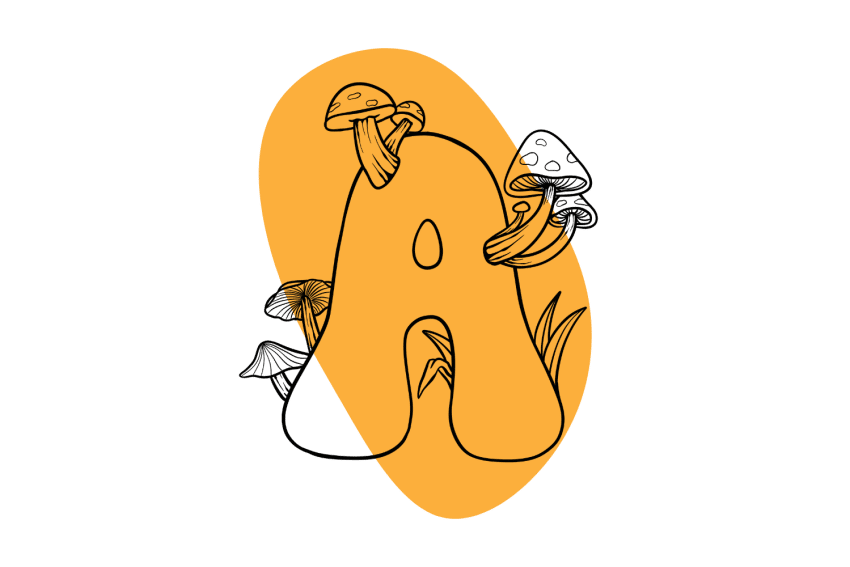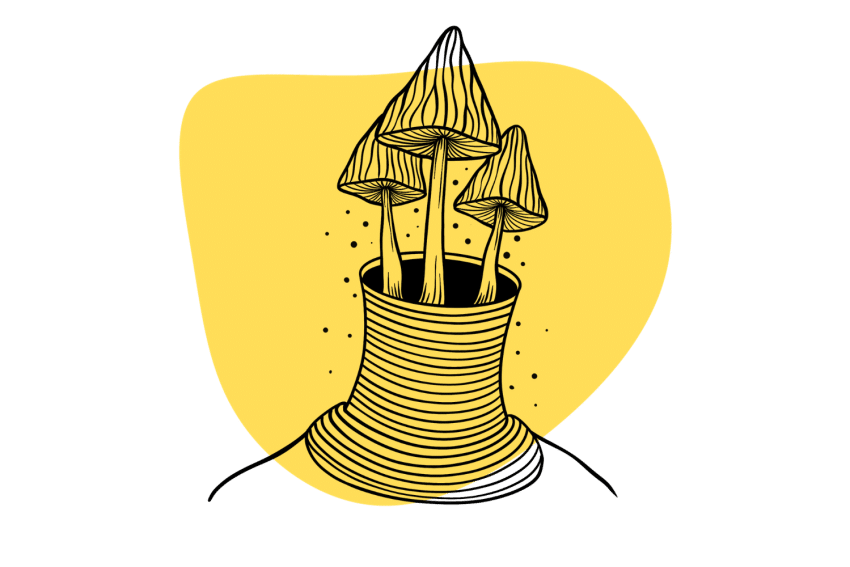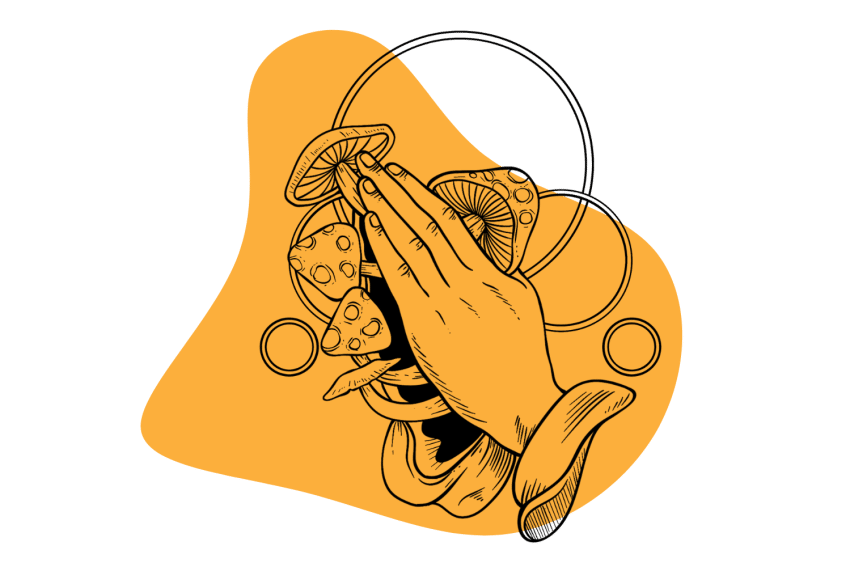Breaking Free from Addiction: The Promising Effects of Magic Mushrooms
Addiction treatment has never been something we’ve had a solid grasp on ⛓️ It’s a complicated issue typically revolving around behaviors we don’t fully understand or have a grasp on.
For all our research and understanding, our only mode for dealing with dependence revolves around fledgling treatment programs that fail to address core concerns.
These programs have abysmal success rates and leave many feeling increased levels of shame — the very thing that often drives addiction in the first place.
Though research is still limited and sample sizes are small, psychedelic mushrooms and other psychedelics are challenging the norm and showing surprising success in treating addiction.
This flies in the face of total abstinence from all substances, which has long been the only marker for success.
Let’s discuss how this works and why magic mushrooms will likely play a key role in addiction therapy in the near future.
Related: How Psychedelics Are Reinventing Addiction Therapy
Is Psilocybin Beneficial for Treating Addiction?
While it’s still up for debate, preliminary findings suggest psilocybin-containing mushrooms could help with use disorder and dependence. One study took ten volunteers diagnosed with alcohol dependence and found psilocybin helped reduce the number of heavy drinking days they took part in [1].
These results remained true when researchers followed up five weeks later. While this was not the first time researchers studied psilocybin as a potential treatment for addiction, it did reignite the interest.
In 2022, scientists were able to replicate the result with 95 total participants — 49 of whom received psilocybin along with therapy [2]. They found participants who took the psilocybin dose had significantly fewer heavy drinking days as far out as 36 weeks later.
The reasoning for this is still unknown — we’re unsure if it has to do with the drug itself or the “trip” it takes the user on. If it’s the subjective effects of the drug, it serves a similar function to therapy, allowing the user to look deep inside and change poor behavior.
This goes with the famous Timothy Leary quote: “I learned more about psychology in the five hours after taking these mushrooms than in the preceding 15 years of studying and doing research in psychology.”
Conversely, the act of the drug attaching to the receptors of the serotonin system could be the main factor [3]. It’s likely to be a combination of the two — especially in combination with therapy — where it appears most effective.
Regardless, the potential is there, and the world of psychedelics is abuzz around the possibility of this powerful “new” treatment.
What Causes Addiction?
Addiction manifests itself as the result of a variety of outside influences and traumas. While it’s true there is a biological tie to addiction — meaning it can pass down through a family’s genetics [4] — it’s far more complex than this.
Other factors that lead to addiction are environmental and developmental concerns. Environmental problems include your peer group, the exposure/attitude towards drugs of the people around you, stress, and abuse.
Developmental problems refer to complications with normal development and coping mechanisms. This may come from the outside environment or the use of drugs and alcohol on a developing brain.
As Dr. Gabor Maté puts it in the helpful example from the video below:
[Pretend you are] a two-year-old; you get angry because you can’t have a cookie before dinner. But your parents can’t handle anger because they’re … terrified at the expression of anger. So they give you a message that “good little kids don’t get angry.” The message you receive is not [this], but that “angry kids don’t get love.”
Outside of genetic predispositions towards addiction, most indicators relate to mental health and disorders. For this reason, one of the biggest — yet, tragically most overlooked — ways to treat use disorder is therapy.
12-step programs usually answer this by offering open, free group sessions to process everything. While these sessions don’t answer every need of users, they’re a crucial piece of harm reduction and one of the only free options for help.
This works very well for understanding and growing past difficult experiences related to the user’s dependence, but it misses something. Many people struggling with this condition have experienced deep trauma that they have yet to process.
Often, this far exceeds the capability of any group — especially considering how few of them include professional therapists. Furthermore, these programs require you to own up to your mistakes and apologize without much regard for the times someone may have harmed you.
As a result, it’s easy to feel increased guilt and shame for the condition while not processing some of its root causes.
What Makes Psilocybin Beneficial for Addiction?
There are many schools of thought about the way psilocybin can assist with treating addiction. While researchers are still working to understand the mechanism of action behind the effect, it’s clear therapy plays a big role.
Here are a few of the ways psilocybin can assist with treating addiction:
1. The Mystical Experience
A mystical experience is a transcendent and transformative experience that goes beyond ordinary perception and understanding. It’s often associated with spirituality and a sense of unity with a higher power or the universe.
One recent review found this experience to be crucial in psychedelic-assisted addiction therapy and shows the strength of the mystical experience can predict the treatment’s success [5]. Limitations to this are the same as any other psychedelic study since it reviews other research.
Sample sizes are too small to claim anything is certain, but there is a potential benefit to the experience of psychedelics.
The other benefit of the mystical experience is how open it leaves the one experiencing it. Often, the intoxicating effects of these substances enable people to discuss tragic moments in their lives that they otherwise lock away.
The importance of how much this can assist with therapy is something we cannot overstate. The relationship between shame and addiction [6] makes it difficult for people struggling to talk about it.
Breaking down those barriers through the psychedelic experience enables users to see their actions in a new light. Shame requires us to push it away and subdue the unhelpful or unhealthy thoughts we are having — mystical experiences may help us to visit these emotions, confront them, and process them.
2. Deactivation of Cravings
One of the controversial areas of psychedelic research is the area of creating psychedelics that aren’t actually “psychedelic.” Different companies are currently working on developing molecules that mimic the molecular effects of psychedelic drugs but don’t cause any hallucinations or intoxication in the user.
A good example of this is Mind Med’s 18-MC — which is a non-psychoactive version of ibogaine (another popular psychedelic for treating addiction).
The main reason for this is to appeal to people who want the benefits of psychedelics without having to face the potentially frightening experience. Some research shows this may be enough to provide a similar effect [7].
Tryptamine psychedelics like psilocin are strikingly similar to serotonin in their shape. They’re close enough to operate on the same receptors (5HT receptors).
Though dopamine is usually the main topic of conversation around addiction, serotonin plays a role as well [8]. This is why some believe the molecular makeup of the drug alone is enough to cause the effect people are seeking.
In particular, psilocin (and other tryptamine psychedelics) target the 5HT2A receptors, which are especially concentrated in the outer layer of the cerebral cortex. These receptors appear to suppress a higher brain network called the default mode network (DMN). This system is partly responsible for upholding structure and rigidity in our thinking. While this effect is important in daily life, it can also lead to bad habits — such as addictive or compulsive tendencies.
People suffering from addiction may possess an overactive DMN, which drives unhealthy cravings [14]. The theory is that by temporarily deactivating this system, the user can dismantle the restrictive tendencies and patterns this system can create.
The Importance of Therapy Alongside Magic Mushrooms
The root of dependence on any substance often goes back to deep emotional distress. Psilocybin-assisted therapy helps patients become more vulnerable and able to address these concerns, but this is a double-edged sword.
Psychedelic-assisted addiction treatment involves several therapy sessions — usually at least 3–4 before and after the day of dosing. During this, they assist with dealing with these dark forces through things like shadow work and addressing underlying issues to help you effectively deal with them during the psychedelic experience.
Therapy isn’t a requirement for everyone who wants to experiment with psychedelics, but it often helps bolster the effects and negate negative experiences. While most “bad trips” are nothing more than a few hours of unpleasantness, they can turn into something much darker and even worsen symptoms.
A recent study on the effectiveness of MDMA on PTSD had three participants report issues like “suicidal ideation, suicidal behavior, or self-harm in the context of suicidal ideation [9].” These drugs are not magic bullet solutions to complex problems.
Dark, negative, and harmful emotions can enter into any psychedelic experience during a time when you are already quite vulnerable. It’s imperative to have someone on hand — at least a sober trip sitter — to help you navigate any troublesome waters.
Related: What Is Psychedelic-Assisted Psychotherapy?
What is Integration?
Getting a profound message is one thing, but it can be hard to implement the lesson once life returns to normal. The process of doing so — integration — is a key component of psychedelic-assisted psychotherapy psychonauts often overlook.
If your daily life includes reflexive actions you want to get rid of, like drinking or smoking, the mushroom may tell you to give these up, but what about tomorrow when you’re sitting in front of the TV after a long day? Integration deals with these questions and considers how the trip’s message applies to life outside the experience.
Even in personal use outside of therapeutic offices, taking time to consider how your trip should assimilate into your life is well worth the effort. After all, what good is a message we don’t listen to or apply?
Related: How to Become a Psychedelic Integration Coach
Are Magic Mushrooms Legal?
Mushrooms are broadly illegal throughout the world, with a few notable exceptions. In America, some states and counties have decriminalized psilocybin (such as Anne Arbor and Hazel Park, Michigan; Easthampton, Northampton, Somerville, and Cambridge, Massachusetts; and Santa Cruz, Berkeley, and San Francisco, California).
Decriminalization is a helpful step forward, but it doesn’t mean there aren’t any penalties. It also doesn’t lead to a safe or readily available supply, which means users still have to source it themselves (illegally) either from the streets or through home cultivation.
In some states, including both Oregon and Colorado, it’s legal for licensed medical practitioners to administer psilocybin therapy.
Psilocybin therapy is already being used for the treatment of existential anxiety in Canada and will likely soon become available for addiction, depression, and PTSD treatment here as well. So far, Vancouver, BC, and Toronto, Ontario, have decriminalized magic mushrooms.
The Netherlands and Jamaica are the only countries where mushrooms are legal for retail sale. Though only psychedelic truffles are technically legal in the former and the market is new in the latter, the movement is steadily going this way.
Though magic mushrooms aren’t technically legal here, an emerging industry of psilocybin-retreat centers is also popping up around Mexico and Costa Rica. With a complete lack of intervention here, it appears magic mushroom decriminalization, or perhaps legalization is imminent here as these countries try to take advantage of the booming psycho-tourism industry.
Related: What’s the Difference Between Legalization & Decriminalization?
Research On Other Psychedelics for Addiction
Research has looked into several psychedelic and psychoactive substances to treat addiction. It would be impossible to determine if any of these are better suited than others at this stage, but there are many options with promising aspects.
Here are a few other psychedelics that are getting a reputation for helping with addiction and dependence.
LSD for Addiction
Addiction was one of the first applications researchers began studying for LSD after its creation. As far back as 1967, researchers were looking into the use of LSD for alcoholism [10].
Recent studies seem to confirm this connection. One review identified six trials with 536 total participants and found a single LSD dose to be “associated with a decrease in alcohol misuse [11].”
Many years ago, an already sober Bill Wilson dropped acid, much to the horror of the group he founded — Alcoholics Anonymous. Though often misrepresented as the drug that got Wilson sober, he wrote that he was “certain that the LSD experience has helped me very much.”
After trying it, Wilson was confident it could help alcoholics recover, but under pressure from others, he gave up his use and activism for the substance.
Belladonna Addiction Treatment
The actual drug Wilson could credit with getting him clean came from the Atropa belladonna plant. This is a much darker option, as it comes from the nightshade family — similar to datura. These plants act as deliriants, often resulting in horrific experiences.
While this is technically in a different class from psychedelics, one could argue it’s a similar attempt to break free of the normal thinking pattern. As the story goes, during his treatment, Mr. Wilson shouted out for god to show themself and saw a blinding light and felt peace.
This mystical experience brought him the ability to abstain from alcohol for the rest of his life. While he achieved this experience through the belladonna treatment, one could argue a similar one is much easier to accomplish through psilocybin or LSD.
Ibogaine for Addiction
Ibogaine comes from the tropical shrub Tabernanthe iboga and is of much interest in treating addictive behaviors. One study found a single dose of the substance was enough to render 75% of participants free of opioid use disorder at a 12-month follow-up [12].
While this represented a small case study of only 12 participants, this is still an impressive result for one of the most addictive substances we know of. Ibogaine is one of the most intense psychedelic options available, with trips lasting up to 72 hours.
During this time, users can expect to feel the onset within an hour and a half, with the “peak” of the journey happening between hours 18–36. This intense option does provide several negatives for potential therapies, as it would require professionals to be present for up to three full days.
Can You Become Addicted to Magic Mushrooms?
There is a very low risk of abusing psilocybin due to its quick-forming tolerance. The effects of psilocybin greatly diminish after the first use and only go down from there [13].
As a result, you would have to consume significantly larger amounts each time for a similar effect, making it hard to abuse. Additionally, the experience itself is often so tiring and emotionally draining that it rarely leaves psychonauts wanting to dive right back in.
Together, these components make it very unlikely — though not impossible — to abuse or misuse psilocybin.
What to Expect When Taking Magic Mushrooms?
Certain elements of the psychedelic experience are impossible to describe and can vary from user to user. The main thing that frequently occurs on the trip is an opening of the mind and an examination of life.
When dealing with dark concepts or behaviors, some thoughts flowing from this state can be quite troubling. As we mentioned above, one study involving PTSD patients and MDMA led to more than one of them having suicidal thoughts or behaviors [9].
Addiction usually finds roots in traumatic events throughout life, which can be difficult to discuss. A psychedelic experience in combination with therapy shows obvious potential benefits for this reason, but even this is not without risk.
It’s absolutely possible — depending on the person — that therapy isn’t necessary, but this only increases the risk since it removes the safety net to help work through these thoughts. Regardless of the situation, if you plan to take mushrooms, approach them cautiously and respectfully.
If you find yourself alone and a dark thought creeps in, try to acknowledge it and see what it has to say. Most people find these thoughts move on after this and may even leave you with a lesson.
Safe Guidelines for Taking Magic Mushrooms
Unpleasant experiences — or “bad trips” — can happen to anyone at any time on psychedelics. When dealing with dark or unpleasant thought patterns like those leading to use disorder, the user may be more prone to experiencing this than others.
Regardless of where you’re at in life, here are the safeguards everyone should take when using magic mushrooms:
- Evaluate your mindset and the setting you are in, and make sure both are calm and tranquil. “Set and setting” determine a tremendous amount about your experience.
- Know what to expect with your dosage and slowly build up the amount you use over time. If you want to try a large dose of mushrooms, start with a smaller amount and plan 2–3 trips to get to the desired level.
- Familiarize yourself with the timeline of a psychedelic experience. With mushrooms, onset can take up to an hour and a half and may last 6–8 hours before you return to baseline.
- Consider a therapist or a sober trip sitter on standby to help. Make sure this is someone who knows what you’ll experience and how to help you with it.
- Don’t mix mushrooms with medications — especially cardiac, neurological, and psychiatric medicine.
- Abstain from other drugs and alcohol when you’re taking psilocybin, as the combination can create an unpleasant experience.
Following this list doesn’t guarantee a bad trip won’t happen, but it helps prevent them and put you in the right mindset to work through them if it does happen. Always enter into a trip with the mindset that negative and dark thoughts can and will come up — and that’s okay.
Conclusion: Can Taking Magic Mushrooms Help With Addiction?
The research is still incoming, but preliminary findings are extremely positive. Until now, no treatments have effectively addressed the concern of addiction.
Psychedelics can help improve the user’s capability to look at traumatic experiences and process them, giving them the boost they need. Combined with therapy, psychedelics likely seem like a bit of a no-brainer for most people who have tried them.
Only time will tell the full extent of psilocybin’s ability to help with this and other treatments.
References
- Bogenschutz, M. P., Forcehimes, A. A., Pommy, J. A., Wilcox, C. E., Barbosa, P. C., & Strassman, R. J. (2015). Psilocybin-assisted treatment for alcohol dependence: a proof-of-concept study. Journal of Psychopharmacology, 29(3), 289-299.
- Bogenschutz, M. P., Ross, S., Bhatt, S., Baron, T., Forcehimes, A. A., Laska, E., … & Worth, L. (2022). Percentage of heavy drinking days following psilocybin-assisted psychotherapy vs placebo in the treatment of adult patients with alcohol use disorder: a randomized clinical trial. JAMA psychiatry, 79(10), 953-962.
- Winkelman, M. (2014). Psychedelics as medicines for substance abuse rehabilitation: evaluating treatments with LSD, Peyote, Ibogaine, and Ayahuasca. Current drug abuse reviews, 7(2), 101-116.
- Deak, J. D., & Johnson, E. C. (2021). Genetics of substance use disorders: a review. Psychological medicine, 1-12.
- Ko, K., Knight, G., Rucker, J. J., & Cleare, A. J. (2022). Psychedelics, mystical experience, and therapeutic efficacy: a systematic review. Frontiers in Psychiatry, 13.
- Rahim, M., & Patton, R. (2015). The association between shame and substance use in young people: a systematic review. PeerJ, 3, e737.
- Olson, D. E. (2020). The subjective effects of psychedelics may not be necessary for their enduring therapeutic effects. ACS Pharmacology & Translational Science, 4(2), 563-567.
- Kirby, L. G., Zeeb, F. D., & Winstanley, C. A. (2011). Contributions of serotonin in addiction vulnerability. Neuropharmacology, 61(3), 421-432.
- Mitchell, J. M., Bogenschutz, M., Lilienstein, A., Harrison, C., Kleiman, S., Parker-Guilbert, K., … & Doblin, R. (2021). MDMA-assisted therapy for severe PTSD: a randomized, double-blind, placebo-controlled phase 3 study. Nature Medicine, 27(6), 1025-1033.
- Abramson, H. A. (1967). The use of LSD in psychotherapy and alcoholism. Bobbs-Merrill.
- Krebs, T. S., & Johansen, P. Ø. (2012). Lysergic acid diethylamide (LSD) for alcoholism: meta-analysis of randomized controlled trials. Journal of Psychopharmacology, 26(7), 994-1002.
- Noller, G. E., Frampton, C. M., & Yazar-Klosinski, B. (2018). Ibogaine treatment outcomes for opioid dependence from a twelve-month follow-up observational study. The American journal of drug and alcohol abuse, 44(1), 37-46.
- Johnson, M. W., Griffiths, R. R., Hendricks, P. S., & Henningfield, J. E. (2018). The abuse potential of medical psilocybin according to the 8 factors of the Controlled Substances Act. Neuropharmacology, 142, 143-166.
- Zhang, R., & Volkow, N. D. (2019). Brain default-mode network dysfunction in addiction. Neuroimage, 200, 313-331.

